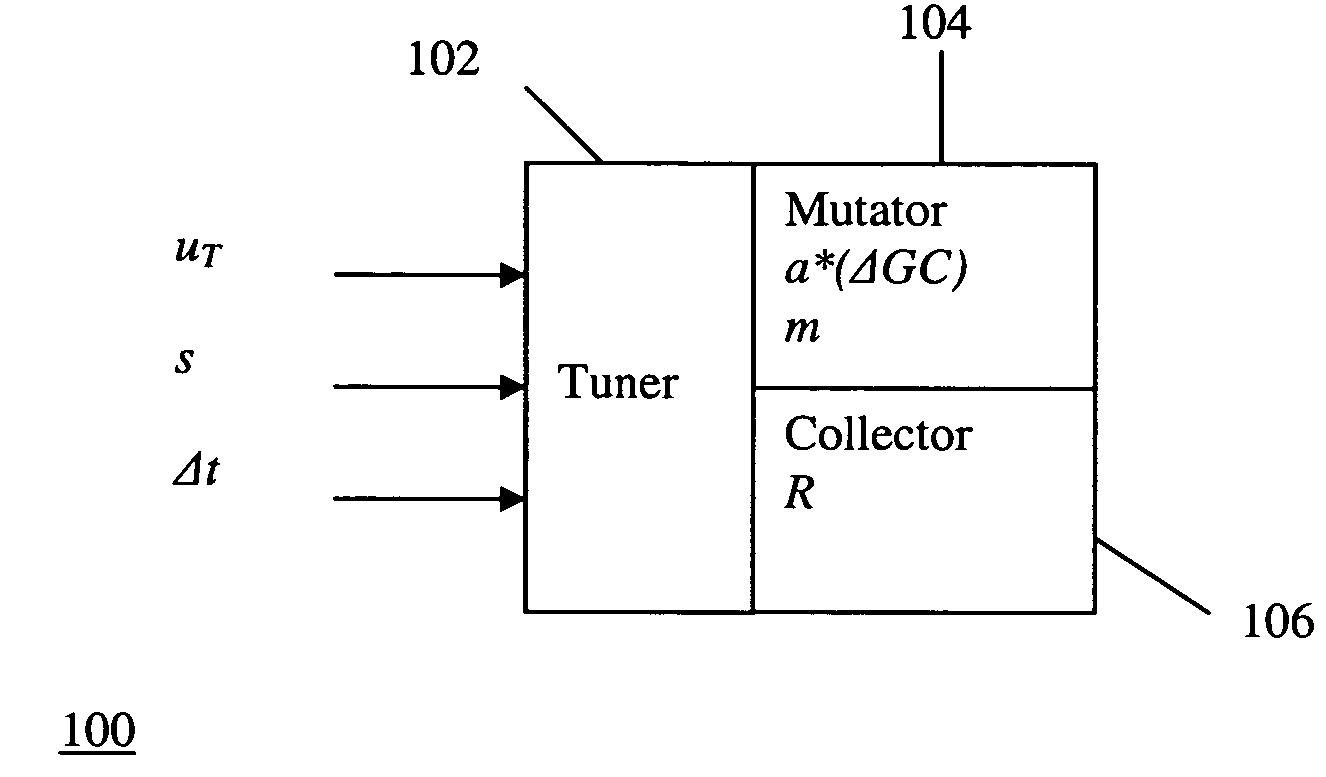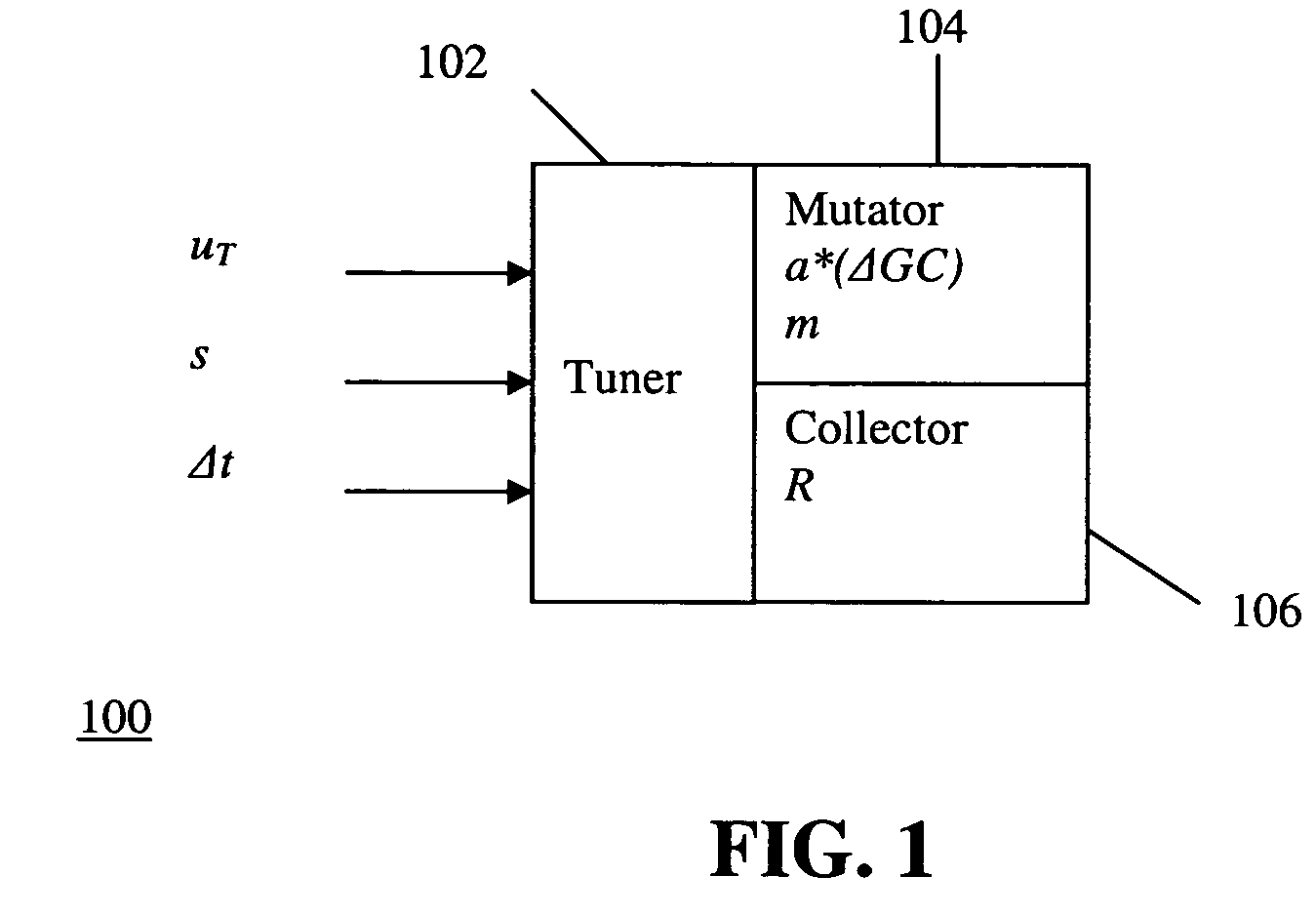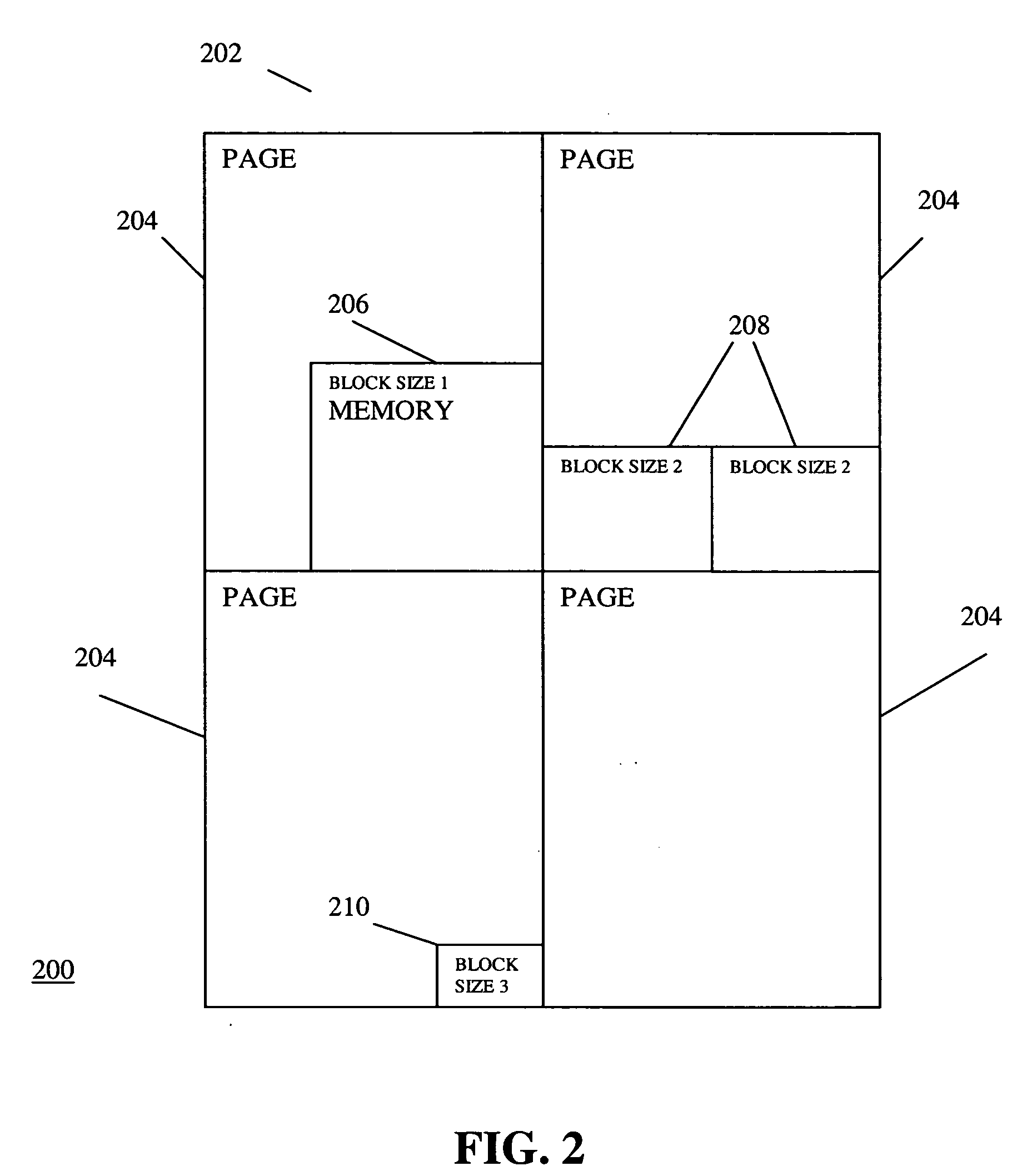Garbage collector with eager read barrier
a garbage collector and read barrier technology, applied in the field of computer memory management, can solve the problems of high software and processing overhead costs, inability to meet real-time systems, and introduce time-consuming null-checks, so as to minimize overhead costs
- Summary
- Abstract
- Description
- Claims
- Application Information
AI Technical Summary
Benefits of technology
Problems solved by technology
Method used
Image
Examples
Embodiment Construction
[0020] A collector constructed in accordance with a preferred embodiment of the present invention will provide guaranteed performance provided that the application is correctly characterized by the user. In particular, the user must be able to specify the maximum amount of simultaneous live data, m, as well as the peak allocation rate over the time interval of a garbage collection α*(ΔGC). The collector is characterized by its tracing rate R. Given these characteristics of the mutator and the collector, the user has the ability to tune the performance of the system using three interrelated parameters: total memory consumption, minimum guaranteed CPU utilization and the resolution at which the utilization is calculated.
[0021] The relationship between these parameters is shown graphically in FIG. 1. The mutator 104 is characterized by its allocation rate over a garbage collection interval α*(ΔGC) and by its maximum memory requirement m. The collector 106 is characterized by its colle...
PUM
 Login to View More
Login to View More Abstract
Description
Claims
Application Information
 Login to View More
Login to View More - R&D
- Intellectual Property
- Life Sciences
- Materials
- Tech Scout
- Unparalleled Data Quality
- Higher Quality Content
- 60% Fewer Hallucinations
Browse by: Latest US Patents, China's latest patents, Technical Efficacy Thesaurus, Application Domain, Technology Topic, Popular Technical Reports.
© 2025 PatSnap. All rights reserved.Legal|Privacy policy|Modern Slavery Act Transparency Statement|Sitemap|About US| Contact US: help@patsnap.com



